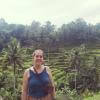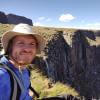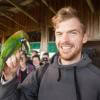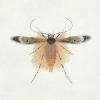Autonomous camera traps for insects provide a tool for long-term remote monitoring of insects. These systems bring together cameras, computer vision, and autonomous infrastructure such as solar panels, mini computers, and data telemetry to collect images of insects.
With increasing recognition of the importance of insects as the dominant component of almost all ecosystems, there are growing concerns that insect biodiversity has declined globally, with serious consequences for the ecosystem services on which we all depend.
Automated camera traps for insects offer one of the best practical and cost-effective solutions for more standardised monitoring of insects across the globe. However, to realise this we need interdisciplinary teams who can work together to develop the hardware systems, AI components, metadata standards, data analysis, and much more.
This WILDLABS group has been set up by people from around the world who have individually been tackling parts of this challenge and who believe we can do more by working together.
We hope you will become part of this group where we share our knowledge and expertise to advance this technology.
Check out Tom's Variety Hour talk for an introduction to this group.
Learn about Autonomous Camera Traps for Insects by checking out recordings of our webinar series:
- Hardware design of camera traps for moth monitoring
- Assessing the effectiveness of these autonomous systems in real-world settings, and comparing results with traditional monitoring methods
- Designing machine learning tools to process camera trap data automatically
- Developing automated camera systems for monitoring pollinators
- India-focused projects on insect monitoring
Meet the rest of the group and introduce yourself on our welcome thread - https://www.wildlabs.net/discussion/welcome-autonomous-camera-traps-insects-group
Group curators
- @tom_august
- | he/him
Computational ecologist with interests in computer vision, citizen science, open science, drones, acoustics, data viz, software engineering, public engagement



- 8 Resources
- 54 Discussions
- 5 Groups



- 9 Resources
- 2 Discussions
- 9 Groups
No showcases have been added to this group yet.
- @pchwalek
- | He/him/his
I'm a PhD candidate in the Responsive Environments Group, working on electronic systems for human and wildlife monitoring.



- 0 Resources
- 18 Discussions
- 9 Groups
Tech-Driven Conservation with a Wild Twist

- 0 Resources
- 1 Discussions
- 8 Groups
- 0 Resources
- 0 Discussions
- 14 Groups
- @Manahil_ijaz
- | she
I’m a nature enthusiast who loves exploring wildlife and ecosystems. Through my research in ecology, I channel this passion into protecting and preserving biodiversity.
- 0 Resources
- 0 Discussions
- 3 Groups

- 2 Resources
- 4 Discussions
- 2 Groups



- 9 Resources
- 2 Discussions
- 9 Groups
- 0 Resources
- 0 Discussions
- 4 Groups
- @peterdesmet
- | he/him
Biodiversity informatician at INBO. Passionate about open data and open science. I develop research software, maintain data standards and publish datasets, mostly for animal movement research.
- 0 Resources
- 1 Discussions
- 5 Groups
- @steventay
- | TAY
Dynamique ET PROACTIF, JE SUIS PASSIONNÉ PAR LA PROTECTION DE L'ENVIRONNEMENT, LE TOURISME RESPONSABLE ET LA CONSERVATION DES ÉCOSYSTÈMES.
- 0 Resources
- 0 Discussions
- 8 Groups
- @mattaudette
- | he, him, his
Software Tester and Test Automator at Wildlife Protection Solutions
- 0 Resources
- 1 Discussions
- 24 Groups
- @williams
- | He/Him
I am a conservationist specializing in endangered species, particularly vultures. As the Endangered Species Conservation Coordinator/Co-Founder at Biota Conservation Hub Foundation (BiotaCHF), I have conducted extensive research/conservation of vultures and other water birds.
- 0 Resources
- 0 Discussions
- 14 Groups
- @ARobillard
- | He/Him
A conservation data scientist and field ecologist with broad interest in the application of machine learning and population genetics to the conservation of threatened species. Alex has conducted field studies throughout central and south America, the Caribbean, and North America.
- 2 Resources
- 2 Discussions
- 8 Groups
New opportunity to work with moths, camera light traps and citizen science in Germany.
5 August 2025
Proud of sharing our paper introducing our underwater camera trap, a solution for automating the production of underwater images and videos of amphibians, reptiles, invertebrates, mammals...
2 July 2025
Sticky Pis are scalable, smart sticky traps using a high frequency Raspberry Pi camera to automatically score when, which and where insects were captured. Author: Quentin Geissmann, 2023
29 April 2025
Sharing this website that provides instructions on DIY hardware assembly, software setup, model training and deployment of the Insect Detect camera trap that can be used for automated insect monitoring. Authors:...
29 April 2025
Applications are open until April 15th
14 March 2025
Up to 6 months internship position to work on DiMON project which aims to develop a non-lethal, compact device that, when coupled with traditional entomological traps, captures high-resolution, multi-view insect images...
25 February 2025
Article
NewtCAM is an underwater camera trap. Devices are getting deployed worldwide in the frame of the CAMPHIBIAN project and thanks to the support of our kind early users. Here an outcome from the UK.
24 February 2025
Osa Conservation is launching our inaugural cohort of the ‘Susan Wojcicki Research Fellowship’ for 2025, worth up to $15,000 per awardee (award value dependent on project length and number of awards given each year)....
10 February 2025
Catch up on the highlights from our two-day Mothbox v4.5 workshop at Georgia Tech, where participants gained hands-on experience building and testing the Mothbox.
13 November 2024
Paper by Natalie Klug et al
6 October 2024
The AMI team in montreal is looking for a paid intern to do machine vision stuff!
3 July 2024
November 2023
event
| Description | Activity | Replies | Groups | Updated |
|---|---|---|---|---|
| This video is so great - I don't know what I was imagining that you were building, but this is so much bigger and more involved than whatever I was vaguely thinking. Really cool... |
|
Autonomous Camera Traps for Insects | 2 years 5 months ago | |
| Hey Tom,Since the output is dependent on a couple of factors such as the solar irradiance of the place, shading from the canopy, the type of solar panels (mono, poly or amorphous... |
|
Autonomous Camera Traps for Insects, Build Your Own Data Logger Community, Camera Traps, Conservation Tech Training and Education, Sensors | 2 years 6 months ago | |
| Awesome! it would be great to hear how you get on, maybe you can share your results here when you have them. Is the camera only for the Pi? That could be a problem for scaling as... |
+7
|
Autonomous Camera Traps for Insects, Sensors | 2 years 8 months ago | |
| Hi Julien, we are working with the Luxonis OAK-1 which can run lightweight detection models (e.g. YOLOv5n/s) directly on-device. However you will still need a host, for... |
|
Autonomous Camera Traps for Insects | 2 years 9 months ago | |
| My most prized camera trap image - a hummingbird caught on camera! |
|
Autonomous Camera Traps for Insects, Camera Traps | 2 years 10 months ago | |
| Might be good to add this to the 'Automated Camera Traps for Insects' group |
|
Camera Traps, Autonomous Camera Traps for Insects | 2 years 10 months ago | |
| Have you considered creating a Kaggle competition? If you already have lots of images, and some that have been labelled, then this could be a good way to get people working on a... |
|
AI for Conservation, Autonomous Camera Traps for Insects, Camera Traps | 3 years ago |

































